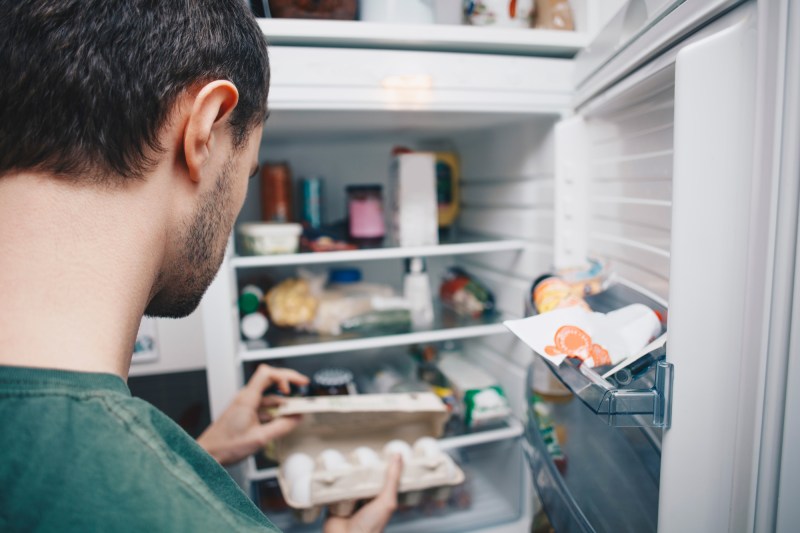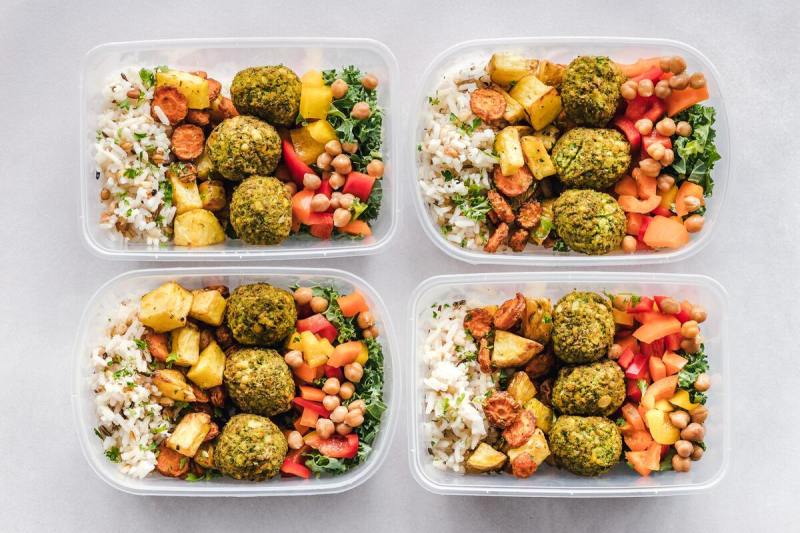If you’re living a busy lifestyle and always running around, trying to get things done, what you’re going to eat today may be the last thing on your mind. It can be so easy to just go through a drive-thru or order takeout because you have barely anything in your fridge and don’t have time to cook anyway. This is where proper meal planning can be a game changer.
Meal planning keeps things simple, saves time, and does your future self a favor. Keep reading to learn how to meal prep to save money and support your health and fitness goals.
How to start meal prepping

When you’re short on time, it’s easy to grab something quick, like fast food. Unfortunately, these easy options are packed with sodium, fat, and processed ingredients. Meal prepping removes this temptation and puts a healthy, nutritious option on the table. This will have a huge positive impact on your daily life.
If you’re new to meal prepping, don’t go all in and prep the 15 meals you need for the week in one sitting. Founder and CEO of Ghost Brooklyn (a members-only fitness lounge and private training facility) Aqib Rashid said he recommends meal prepping to the majority of his high-profile clients, but only for a meal or two per day.
“It’s effective to use meal prep to make better decisions during, say, your daily lunch scavenge. It’s noon, you’re starving, do you go to the vending machine, fast food, or the fridge where you’ve given yourself the easy decision,” Rashid said.
When should you meal prep?

Rashid has always followed the corporate nine-to-five schedule, which is familiar to many of us. When the week is stacked with a busy, inflexible work schedule and personal commitments, this means you’ll have to give up some time on your precious weekend to meal prep for the week. For Rashid, the sacrifice is worth it.
“Sundays are the best. Come Monday, you’re starting your week right. Prepping all your meals for the entire week is time-consuming. But if you’re only prepping lunch, you can knock it out in an hour or two. It may take a few weekends to get used to, but make it a habit, and eventually, it’ll just become part of your weekend routine.
How to keep your meals fresh

The number one and most obvious rule is to put your meals in the fridge after making them. Keep three days’ worth of meals in the fridge and everything else — like protein, grains, and veggies — in the freezer. If you make a big salad, keep it in the fridge.
“I make a large point to make sure I’m taking in adequate veggies and greens,” Rashid explained. “If you can, go speak to a nutritionist for a consultation on what you should be eating to reach your goals.”
Meal prepping is not a science; it’s a lifestyle. Unless you’re following a specific diet from a personal trainer to help you achieve fitness goals faster, don’t worry about macros and micros. Instead, focus on eating whole, healthy foods like chicken and veggies. Pat yourself on the back for making these good food choices on a regular basis instead of reaching for a cheeseburger. (Not that cheeseburgers should be outlawed because they shouldn’t.)
Best meal prep grocery lists and recipes

Keep it simple and start with the basics: Lean proteins, carbs, and vegetables. Always pick whole foods over processed options. Make sure to avoid sugars and trans-saturated fats. This shouldn’t be difficult — stick to the perimeter of the grocery store, avoiding the aisles with packaged, processed foods.
We consulted with Geoff Tripp of the personal training app Trainiac to create an easy meal prep grocery list. With these 10 items, you can prep three to five meals for the following week. In this list, Tripp also includes items for your lunches and snacks.
“You’ll need about an hour to prep for your meals, which will include cooking the chicken, washing and cutting up your veggies, and mixing everything together to make your tuna/chicken salad and tuna/chicken wrap,” Tripp said. “Once you get a great system down with simple ingredients that can be used across multiple meals, your options for having a healthy meal or snack become less daunting, and your meal prep challenges go away.”
Sample grocery list
- 2 cans of white albacore tuna
- 2 pounds lean chicken breasts
- 1 bunch of kale or a pre-washed bag of kale
- Light vinaigrette salad dressing
- Bag of whole wheat tortillas
- Bag of mixed peppers (green, red, orange)
- Bag of whole carrots
- Hummus
- Almonds, raw
- Bag of small apples
Best meal prep recipes
Tuna or chicken salad recipe
Ingredients:
- 2 cans white albacore tuna, drained or 2 pounds lean chicken breasts
- 2 medium pieces of kale, taken off the stem and chopped
- 2 handfuls of almonds, chopped
- 1 cup peppers, chopped
- 1 cup carrots, chopped
- 1 tortilla (optional)
- A few drizzles of vinaigrette dressing
- Hummus
Method:
- If making tuna salad, drain the cans. If making chicken salad, cook the chicken breast and chop it into cubes.
- Add tuna or chicken, almonds, peppers, and carrots into a bowl and mix together. Add a few drizzles of vinaigrette dressing to your liking.
- Store in the fridge.
- When ready, quickly assemble your meal for the day. If making a wrap, add hummus as a spread, and then place tuna/chicken salad into the wrap. Swap the tortilla for a bed of chopped kale if making a salad.
Snacks
- Small, single apples
- A handful of raw almonds
- Chopped carrots dipped in hummus
- Drink 12-20 ounces of water
Meal prep containers and other helpful tools

- Containers: If you’re new to meal prepping, invest in a standard set of meal prep containers that are slim and stackable. Sectioned containers help you standardize your meals and encourage portion control. Once your meals are cooked and ready, divvy them out assembly-line style.
- Slow cooker: Slow cookers are a real time saver if you’re one of those people who think they don’t have time to meal prep. Add your protein, veggies, and grains into a single container, and in five to six hours, you have a week’s worth of food. Cleanup is easy, too, with just one dish to wash.
- Blender: “My single favorite kitchen appliance is a Vitamix ,” Rashid says. “In meal prep, we think of solid foods, but I’ll pre-make shakes. Most guys have more than three meals a day, so make protein smoothies to replace a soda.”
- Lunchbox: Lunchboxes aren’t just for kids. To help make carrying your meals from work to the office easier, we suggest investing in a Buy at Amazon .
Frequently asked questions

How do I meal prep while bulking?
Meal prepping can be a great strategy for making your bulking journey easier. When you’re trying to gain muscle, it’s important that you are eating enough throughout the day and not skipping meals — meal prepping can take care of this since everything is planned out. Choose high-protein sources to be the majority of your food, including chicken, ground turkey, beef, tuna, salmon, Greek yogurt, eggs, and cottage cheese. Build meals around those sources with healthy whole foods like rice, quinoa, veggies, and fruits. Also, having protein shakes and protein bars on hand can help you hit high protein goals.
Should I use a meal prep company?
It’s usually more affordable to meal prep your own food versus going through a meal prep company. However, if you have room in your budget and don’t have time to cook your meals, then a meal prep company can be a great way to go. Make sure to choose one that caters to calorie and protein goals if you’re trying to build muscle or lose weight.



